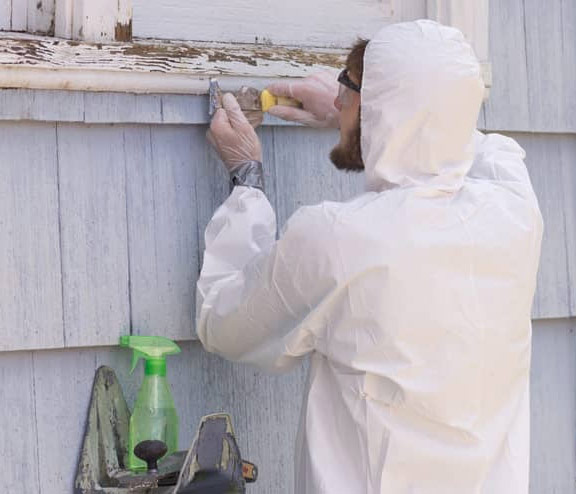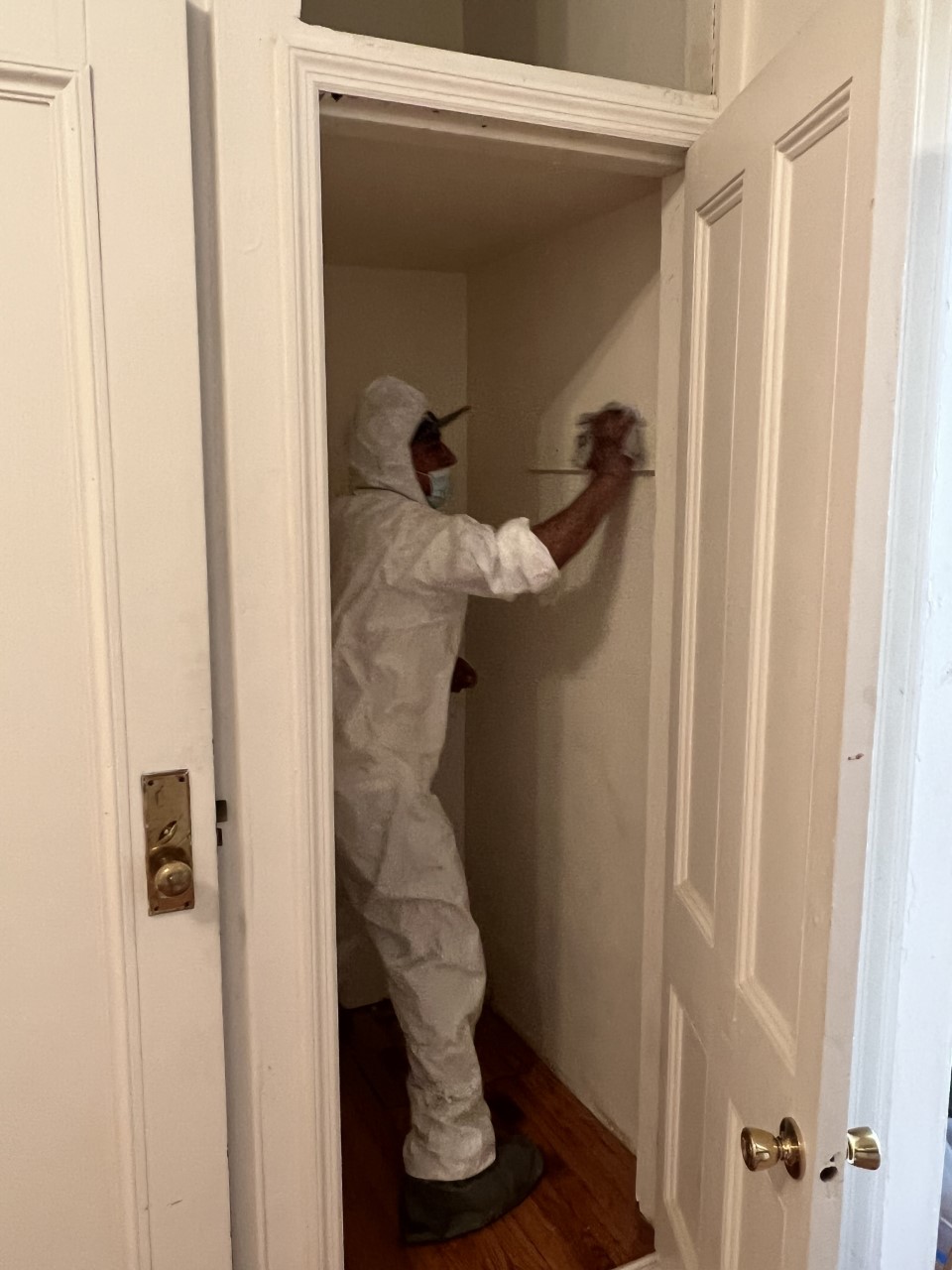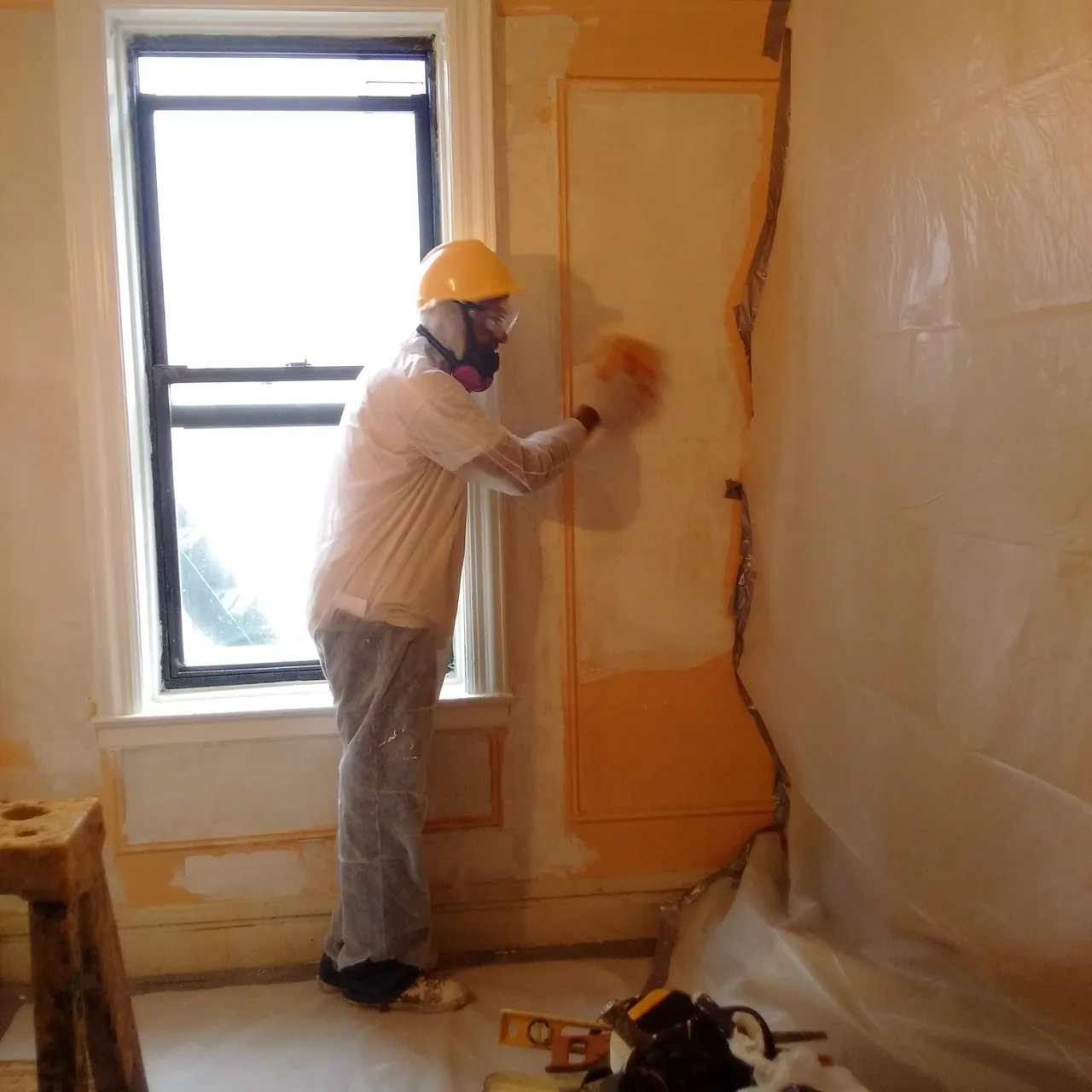NYC Lead Removal Contractors-- Get Safe and Efficient Providers
NYC Lead Removal Contractors-- Get Safe and Efficient Providers
Blog Article
Finest Practices for Guaranteeing Safe and Detailed Lead Violation Reduction
Resolving lead violation reduction calls for a multi-faceted approach to ensure both safety and security and conformity. Preliminary assessments utilizing advanced detection methods such as XRF analyzers set the stage for a precise understanding of contamination degrees. Integrating proper control methods, including impermeable barriers and HEPA purification, paired with making use of individual safety devices (PPE) for employees, creates the foundation of a safe procedure. Precise cleanup methods, including HEPA vacuuming and wet-wiping, are crucial. It's the last clearance process, including complete assessments and lab testing, that absolutely confirms a lead-free environment, guaranteeing long-term safety. How do these methods adjoin to ensure extensive lead abatement?

Initial Analysis
Conducting a preliminary evaluation is a critical initial step in lead offense abatement. This stage includes a detailed examination of the property to recognize the existence, extent, and details locations of lead-based threats. Certified specialists, such as licensed lead examiners or risk assessors, should carry out a comprehensive website inspection, utilizing devices like X-ray fluorescence (XRF) analyzers to accurately discover and determine lead focus in paint, dust, soil, and water.
The assessment has to also consist of a testimonial of the building's background, previous records, and any kind of problems or wellness issues reported by passengers - Lead Removal Contractors. Recording the findings thoroughly is necessary, as these documents create the basis for developing a reliable abatement technique. A detailed assessment likewise includes tasting and research laboratory analysis, which are critical to verify the presence of lead and guide subsequent activities
Additionally, it is essential to interact the outcomes transparently to all stakeholders, consisting of residential or commercial property owners, occupants, and regulatory authorities. By making certain that the first evaluation is carried out with precision and roughness, professionals can lay a solid foundation for a targeted and effective lead reduction procedure, inevitably safeguarding public health and wellness and guaranteeing compliance with governing standards.
Proper Containment
Correct control is essential to avoid the spread of lead pollutants during abatement tasks. Properly managing containment reduces the danger of lead dirt and debris moving to non-work locations, therefore securing both the environment and people outside the instant work zone. To accomplish appropriate containment, an impermeable barrier of plastic bed linen should be developed around the job area, ensuring all seams and sides are securely sealed. Lead Removal Contractors. This obstacle should prolong from flooring to ceiling and be taped down to protect against any leaks.

Normal inspections of the control location are needed to look for violations or weaknesses in the obstacle. Any recognized issues ought to be immediately resolved to maintain the honesty of the containment. By sticking to these practices, reduction projects can properly control lead contamination and alleviate involved health and wellness dangers.
Employee Security
Guaranteeing employee defense is vital during lead abatement projects to stop work-related exposure to dangerous lead particles. Necessary actions include using individual protective tools (PPE) such as respirators, gloves, and full-body fits particularly designed to block lead dust and fumes. Workers must undertake comprehensive training on the right usage and upkeep of PPE, consisting of in shape screening for respirators to guarantee optimum efficiency.
Engineering controls, such as regional exhaust air flow systems, are crucial in reducing air-borne lead concentrations in the workplace. Management controls should additionally be carried out, consisting of restricting the period of direct exposure and turning workers to reduce individual exposure times. Regular clinical monitoring and biological monitoring image source are vital for very early discovery of lead absorption, making it possible for timely intervention and therapy.
In addition, developing a decontamination protocol is crucial. Employees have to adhere to rigid decontamination treatments before breaks and at the end of their change to avoid lead dust from being carried outside the workplace. This consists of extensive hand and face cleaning with lead-specific cleaner and changing out of polluted garments.
Careful Cleanup
Preserving a risk-free workplace extends beyond worker security and incorporates thorough cleanup to make sure lead particles are extensively removed from the site. The procedure of precise cleaning is critical in preventing the recontamination of the abated area and protecting both existing and future residents.
To attain an extensive clean-up, all job areas have to be methodically decontaminated. This involves the use of specialized HEPA (High-Efficiency Particulate Air) hoover and wet-wiping strategies to catch and eliminate fine lead dust that might have chosen surface areas. It is crucial to cleanse all horizontal surfaces, consisting of floors, home window sills, and countertops, as well as vertical surface areas that may have trapped lead particles.
Workers need to put on appropriate individual safety tools (PPE) during clean-up to stay clear of direct exposure to residual lead dust. Made use of cleaning products such as wipes, sponges, and wipe heads ought to be dealt with in accordance with contaminated materials disposal regulations.

Final Clearance
Last clearance is the crucial ending phase of lead abatement that determines whether the website is safe for reoccupation. This crucial step includes thorough assessment and testing to verify that all lead threats have been effectively eliminated. The procedure starts with a visual assessment by a licensed lead-based paint assessor or threat assessor to ensure no visible dirt or debris continues to be. This is adhered to by collecting dust wipe samples from different surface areas, including floors, windowsills, and various other horizontal surfaces. Lead Removal Contractors.

Final clearance screening not only safeguards future owners however likewise guarantees compliance with local, state, and government regulations. It offers as a documented validation of the reduction contractor's adherence to market ideal techniques. Guaranteeing a comprehensive and successful last clearance is crucial in guarding public wellness and fostering trust in the reduction process.
Verdict
Making sure secure and complete lead violation abatement demands a complex wikipedia reference strategy encompassing first evaluations with innovative discovery methods, effective control strategies, rigid worker defense protocols, and meticulous cleaning procedures. The last clearance phase, featuring in-depth evaluations and research laboratory testing, is crucial to verify conformity with EPA standards. click over here now Adherence to these best techniques guarantees a secure environment for owners, mitigates health threats, and upholds governing requirements, therefore promoting public wellness and security in lead-affected areas.
Report this page